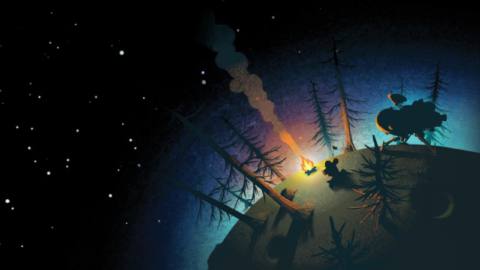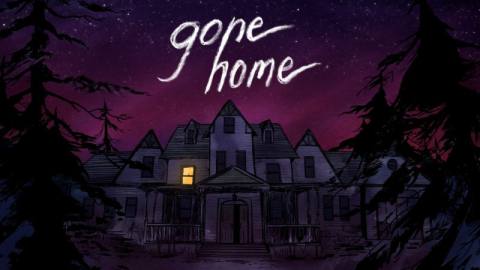
Horror games are some of gaming’s best experiences, but only for those that can tolerate and sit through them from start to finish. But those who don’t play in the horror space can still get their fill in otherwise non-horror games because horror, no matter which genre it’s in, can enhance a game for the better.
Horror is extremely affecting. The jump scares that cause adrenaline spikes, the sweaty feeling of barely avoiding death, the persistent dread that slowly rises to a climactic rush – these emotions affect everyone in different ways.
At the heart of those emotions are the same feelings found in haunted houses, roller coasters, skydiving, and more: the feeling of getting as close as possible to death without actually dying. The horror that gets us close to death is effective in books, television, movies, and even games as a result. Game developers are aware of this, and it’s why horror finds itself sprinkled throughout all genres of video games, although sometimes one must look a little harder to find it.
One of the best examples of this is Fullbright’s Gone Home.
Gone Home is a great game – read why Game Informer gave it an 8.5 out of 10 here – but simply reading a plot synopsis or gameplay breakdown wouldn’t necessarily reveal that. This is because part of what makes Gone Home so great is all of the things it’s not. When the game begins, you’re figuring out how to get into a large spooky house on a stormy night. When you enter the home, you find that it’s empty but not abandoned. Your family is not there, but their packed bags are, and you must determine why.
Right off the bat, the game presents itself as horror. There’s the ambiance of a stormy night, a large, dark, and spooky house, and a mystery within the home’s walls. It’s classic horror stuff, and these things come together to tell you, the player, that things are a little scary right now. As such, your hands might become a little clammy, and your heartbeat might rise a touch. These feelings stick with you throughout the game until you reach its ending and realize it was never a horror game to begin with – it was a love story and a great one at that.

It paints a blanket of dread over a story that keeps you engaged and moving forward (the quicker you leave this spooky house, the better right?). It’s a smart way to keep players playing until the very end where the relief they’ve been searching hours for arrives, and Fullbright gets to reveal the truth of what’s occurred in the Greenbriar home.
Another non-horror game that uses horror in a powerful way is Cyberpunk 2077. CD Projekt Red’s latest RPG is a lot of things, but it’s decidedly not horror. However, there’s a side quest available midway through the story that’s one of the most horrific things I’ve ever experienced in a game: help (or prevent) someone crucify themselves on camera. It’s quite graphic and extremely dark, naturally, but it also provides a look into Cyberpunk 2077 not seen anywhere else.
Cyberpunk 2077 is about Night City’s seedy underbelly and the way the corporate-overrun capitalism of the world has affected those not privy to that wealth. The crucifixion side quest uses the horror of witnessing a real crucifixion to show the player how far people will go to redeem themselves from the deeds they’ve committed in order to simply survive in Night City. It’s a powerful scene made even more powerful by the fact that you directly control how it plays out.
Click here to watch embedded media
For some, space on its own can be quite scary, and Outer Wilds preys upon those natural, space-based fears to inject horror into an otherwise non-horror game. In Outer Wilds, players must determine why everyone is in a loop where the sun explodes every 20 minutes. There’s an argument to be made that dying every 20 minutes no matter what you do is scary in and of itself, but Outer Wilds presents itself more as a sci-fi mystery exploration game than something fit for Halloween.
As you explore unfamiliar planets – discovering ancient relics of those before you, finding warnings of what’s to come, and dodging waterspout tornados or deadly angler fish – you’ll find yourself squeezing the controller tight in hopes that you can survive for just a minute longer. Outer Wilds preys on our most basic instinct in life – survive – to great effect, especially in the way it ramps up your adrenaline only to bring it back down again every 20 minutes.
Click image thumbnails to view larger version
Some developers use horror sequences as a way to shift the type of terrors being experienced in-game. Take The Last of Us Part II, for example. Some might call it horror, but I doubt most people would define it like that before third-person shooter or action-adventure first. Regardless, the events of the game can be quite traumatizing. Even the way Ellie kills enemies sometimes is straight out of an R-rated movie.
Naughty Dog presents a unique “level” in the second half of The Last of Us Part II that not only gives players the chance to experience a new type of scare for the series but likely nods to the horror genre that clearly inspired the game. As you enter a hospital’s lower floor, you’re met with a dark ICU-like unit filled with cordyceps-covered doors and more. You explore, searching for a way out, and that’s when the Rat King, as Naughty Dog refers to it, reveals itself – it’s a massive, overgrown ball of infected that wants nothing more than to take you out.
The sequence feels more at home in a Resident Evil game than it does in The Last of Us, but Naughty Dog uses it to up the ante of everything we’ve already experienced. In one 10-minute gameplay section, Naughty Dog reveals that the world of The Last of Us has even more monstrous enemies than previously thought and that the series could easily slide into horror if it wanted to. It also takes the tension out of the human-versus-human conflict at the center of the game and reminds you that you are actually very lucky to still be a human in this world.
Click here to watch embedded media
While horror’s not for everybody, developers recognize the powerful effects it can have on virtually anyone. That’s why horror has oozed its way into basically every aspect of media. It’s universal in that everyone is scared of something, but unique in that we each have our own fears and haunts living in our brains. And much in the same way games affect everyone differently based on what we personally bring into the experience, horror, too, shapeshifts to look like the monster we each picture in our head – it’s up to developers, though, to determine which genre that monster will skulk in with every new release.
For more about these games, check out our thoughts on Cyberpunk 2077 in Game Informer’s official review and then read Game Informer’s Outer Wilds review. Check out why we gave The Last of Us Part II a 10 out of 10 after that and then read Game Informer’s list of horror games you should play this Halloween season.
What’s the scariest part of a non-horror game you’ve played? Let us know in the comments below!

